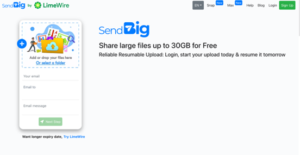Technology
127.0.0.1:62893 in Action: Practical Applications & Security Tips

Introduction
Explore the real-world uses of 127.0.0.1:62893 in network security. Learn practical applications and key security considerations for safe usage. The digital landscape, ever-evolving and multifaceted, thrives on a foundation of interconnected systems. Among these systems, IP addresses and ports are essential components, playing a crucial role in facilitating communication between devices. One such IP address, 127.0.0.1, often referred to as “localhost,” serves as a loopback address, directing traffic back to the originating device. When paired with port 62893, this address gains practical significance, especially in the realms of software development and cybersecurity. This article delves into the practical applications of 127.0.0.1:62893, exploring its utility, security implications, and best practices for its use.
Understanding 127.0.0.1 and Port 62893
127.0.0.1, commonly known as localhost, is a special IP address reserved for internal use. It allows a computer to communicate with itself, enabling testing and development activities without affecting external networks. Port 62893, like other ports, serves as a communication endpoint, directing data to specific processes or services on a device. Together, 127.0.0.1:62893 represents a loopback address and port combination, commonly utilized by developers for testing purposes. This combination allows for the isolation of network traffic, ensuring a controlled environment for debugging and experimentation.
Practical Applications in Software Development
In software development, 127.0.0.1:62893 is an invaluable tool for testing and debugging applications. Developers often use this combination to simulate network connections, allowing them to observe how their software interacts with network protocols. For example, when developing a web application, a developer might configure the application to listen on 127.0.0.1:62893. By doing so, they can test the application’s functionality without exposing it to the broader internet. This isolation ensures that potential vulnerabilities or bugs are contained within the development environment, reducing the risk of unintended consequences.
Moreover, using 127.0.0.1:62893 allows developers to create mock servers or services that mimic the behavior of real-world systems. This capability is especially useful when working with APIs or microservices, where developers can simulate responses and test interactions. By leveraging the loopback address and specific ports like 62893, developers gain greater control over their testing environments, leading to more robust and reliable software.
Security Considerations and Risks
While 127.0.0.1:62893 offers significant advantages in development, it also presents certain security considerations. Because this address and port combination is reserved for local use, it is inherently secure from external threats. However, the security risks arise when developers or users inadvertently expose localhost services to the public internet. For instance, a misconfiguration in a firewall or router could potentially redirect traffic from the external network to 127.0.0.1:62893, exposing the system to malicious actors.
To mitigate these risks, it is essential to implement strict access controls and network configurations. Developers should ensure that services running on 127.0.0.1:62893 are not accessible from outside the local machine. This practice includes configuring firewalls to block external access and verifying that applications are bound only to localhost. Additionally, developers should be cautious when using port forwarding or tunneling services, as these methods can inadvertently expose local services to the internet if not configured properly.
Best Practices for Secure Use
To maximize the benefits of 127.0.0.1:62893 while minimizing security risks, adhering to best practices is crucial. First and foremost, developers should regularly audit their network configurations to ensure that localhost services are not inadvertently exposed. This audit includes reviewing firewall rules, verifying application bindings, and checking for any unintended port forwarding. Additionally, using strong authentication methods for any services running on 127.0.0.1:62893 adds an extra layer of protection, even though these services are typically isolated.
Another important practice involves keeping software up to date. Security vulnerabilities in the software running on 127.0.0.1:62893 could still be exploited by local attackers, especially in shared or multi-user environments. Regularly applying patches and updates reduces the likelihood of such vulnerabilities being exploited. Furthermore, developers should consider using network monitoring tools to track traffic to and from 127.0.0.1:62893, allowing them to detect any unusual activity that might indicate a security breach.
Finally, educating developers and users about the proper use of localhost addresses and ports is essential. Understanding the implications of exposing services on 127.0.0.1:62893 and the potential risks involved can lead to more informed decisions and safer practices. Whether in development environments or production settings, a thorough understanding of the security considerations surrounding localhost use is vital.
Conclusion
127.0.0.1:62893, while seemingly just another address and port combination, holds significant importance in the world of software development and cybersecurity. Its practical applications in testing, debugging, and service simulation make it an essential tool for developers. However, like all powerful tools, it comes with its own set of risks and security considerations. By adhering to best practices, such as proper network configuration, regular updates, and user education, developers can harness the power of 127.0.0.1:62893 while keeping their systems secure. As the digital landscape continues to evolve, understanding and managing the implications of localhost addresses and ports will remain a critical component of effective and secure software development.
Media
Send Large Files Free up to 10 GB: Top 3 Options

Have you ever been in such a tricky situation that you have to transfer heavy files like a large number of videos or photos up to 10 GB?
Whenever things like this happens, you may be frustrated by your email notice displaying “Your file sizes are too large”. File size limit prompts thousands of users to seek for some more suitable options that allow them to make 10 GB files transfer with no payment required.
Here, we are more than delighted to tell you some good news that there are numerous free 10GB file transfer services with no hidden fees. You will no longer be bothered by inadequate storage space as these file transfer apps and tools can help you to transfer large files quickly and securely.
In this guide, we’ll provide you with the best 3 options that can transfer big documents exceeding 10 GB for free. These solutions can make your transfer process seamless and much easier. So let’s get started!

Why is Sending Large Files up to 10 GB a Huge Challenge?
Whenever you want to transfer your file as attachment of emails, you have to deal with the problem of file size limits.
For instance, Google Email only enables 25 MB per transfer. Some other email sites even limit your files down to the size of 25 MB.
Why is sharing huge files so troublesome? We concluded it into 4 primary reasons:
- File size limitations
Many email services and instant message tools have size limits for attachments, usually between 25MB and 50MB. This size limit is too small to send most of the important files.
- Slow transfer speed
The larger the file is, the longer time it will take to upload or download to the cloud storage and share with others. So, sometimes you may waste so much time waiting for the whole sharing process to be completed.
- Incompatibility
Some of your file formats may fail to be compatible with the recipient’s device or software.
- Complexity of tools usage
Some transfer tools require complex setup or registration processes.

Top 3 Solutions to Send Large Files Free Up to 10GB
Owing to all the inconvenience caused by the huge size of heavy files, many users are struggling to find some other solutions that are suitable for their personal needs.
To clear out your confusion, our team conduct a hand-on and in-depth experiment and find that TeraBox, SendBig, and YDRAY are 3 excellent choices for you to transfer massive files at the maxim of 10GB.
Comparisons of TeraBox, SendBig, and YDRAY
| TeraBox | SendBig | YDRAY | |
| Transfer Size Limit | Unlimited size limits after login | 30 GB | 10 GB |
| Permanent Free Storage Space | 1024 GB | ✘ | ✘ |
| Customizable Validity Period | ✔ | ✔ | ✔ |
| Mobile App | ✔ | ✘ | ✘ |
Now, let’s look at these online sharing services in detail one by one:
1. TeraBox: The Most Irreplaceable Solution for Online Sharing
All of our team members come to an agreement that TeraTransfer outperforms most competitors and demonstrates its exclusive potential as a robust online transfer free of charge.
On its TeraTransfer website, you can send files up to 5 GB without the need for registration. What’s even better, logging into your TeraBox account grants you unlimited transfers with no restrictions on file size!
Additionally, TeraTransfer allows you to customize your sharing options by setting a validity period with the time duration running from 24 hours, 1 month, 6 months, and permanent, or adding dual-layer passwords for enhanced access control.
If you go to its major website TeraBox, you can enjoy more enhanced features. By signing up as a registered user, you can be provided with a lifetime of 1024 GB of free storage—completely for free! This feature eliminates the challenges posed by storage limitations.
Most importantly, TeraBox surpasses all the other competitors with its powerful security features, including end-to-end encryption, two-factor authentication, and a Personal Vault. These measures ensure your files remain secure, protecting against data breaches or unauthorized access.

Pros:
- 1024 GB of free storage space
- Flexible file-sharing options
- Customizable validity periods
- Secure end-to-end encryption
- Two-factor authentication for enhanced security
- Personal Vault
- Automatic data backups
- High-speed uploads and downloads
- Support for multiple devices
- Cost-effective storage plans
- Intuitive and user-friendly interface
- Online file decompression capability
- And much more!
Cons:
- Free version may show advertisements
2. SendBig
SendBig, established in 2015, is a free file-sharing service designed to offer users secure, reliable, and privacy-focused file transfers.
Users can upload files up to 5 GB without registration.
If you sign up for a free account in SendBig, then you can gain more accesses to enhanced features, including its capability to upload files up to 30 GB, and also you can be granted with the qualification to use MAX function, which prolongs file validity by 30 days after each download.

Pros:
- Registered users can upload files up to 30 GB
- Customizable expiration dates
- User-friendly interface
Cons:
- No mobile app
- Limited free features
3. YDRAY
YDRAY is a free platform that enables users to send and share large files, offering transfers up to 10 GB with maximum security and privacy.
It is ideal for both personal and enterprise uses. It ensures a seamless and straightforward experience with its high transfer size limitations, making it a to-go choice for sharing large documents, videos, high-resolution images, and other substantial files without the need to take physical storage devices everywhere.

Pros:
- Send files up to 10 GB without any charges
- No registration required
- Simple and user-friendly interface
Cons:
- Limited maximum file size
- No permanent storage space
- No mobile app
Final Thoughts
Finding a cost-free solution for sending large files more than 10 GB can be very complicated. You have to take the size limit, the transferring spend, the compatibility, the quality, and all the other possible factors into consideration.
For your demands, we provided a list of top 3 no-cost methods that enables sharing of big files up to 10 GB. TeraBox outperforms other solutions with its its 1 TB of free storage space and unlimited transferring file size after login.
If you haven’t tried TeraBox when sharing your files yet, it is a perfect time to start a brand-new experience with it now! Clock is ticking, just dive in!
general
Safety Protocols and Training for Lyft Drivers

As a Lyft driver, your top priority is ensuring the safety of your passengers and yourself. Adhering to proper safety protocols and undergoing comprehensive training are essential to providing a secure ride-sharing experience. Whether being involved in a Lyft Accidents in St. Louis, in this article, you’ll discover the key safety measures implemented by Lyft and learn about the training programs designed to equip you with the necessary skills and knowledge.
Driver Safety Policies
Background Checks and Vehicle Inspections
At Lyft, driver safety begins before you even hit the road. All potential drivers must pass a comprehensive background check, including a review of driving records and criminal history. This screening process helps ensure that only qualified individuals are entrusted with passenger safety. Additionally, your vehicle must meet rigorous safety standards and pass regular inspections to remain eligible for the platform.
In-App Safety Features
Lyft’s commitment to driver safety extends to its technology. The app includes several built-in safety features to protect you on the job. These include:
- Emergency assistance button for quick access to 911
- Real-time ride tracking shared with trusted contacts
- Two-way rating system to flag problematic passengers
- Ability to end rides and report issues immediately
Continuous Education and Training
Lyft provides ongoing education and training opportunities to keep safety at the forefront. You’ll have access to resources covering defensive driving techniques, de-escalation strategies for difficult situations, and best practices for maintaining a safe vehicle. Regular safety updates and refresher courses help ensure you’re always prepared for the challenges of the road.
Insurance Coverage and Support
Understanding that accidents can happen despite precautions, Lyft offers comprehensive insurance coverage for drivers. This includes liability protection, uninsured/underinsured motorist coverage, and contingent comprehensive and collision coverage. In the event of an incident, Lyft’s dedicated support team is available 24/7 to assist you and ensure your well-being.
Background Checks for Lyft Drivers
Comprehensive Screening Process
At Lyft, safety is paramount. This begins with a rigorous background check process for all potential drivers. This multi-step screening ensures that only qualified individuals are entrusted with transporting passengers. The company employs a thorough vetting system beyond basic criminal record checks, delving into various aspects of an applicant’s history.
Criminal Record Verification
One of the cornerstones of Lyft’s background check is a comprehensive criminal record search. This includes county, state, and federal checks spanning the past seven years. The company looks for any red flags, such as violent crimes, sexual offenses, or drug-related convictions, that could potentially compromise passenger safety. It’s worth noting that Lyft adheres to fair chance hiring practices, evaluating each case individually and in compliance with local regulations.
Driving Record Examination
Equally important is the scrutiny of an applicant’s driving record. Lyft reviews the Motor Vehicle Record (MVR) to assess the driver’s history on the road. This includes checking for:
- Moving violations
- DUI convictions
- License suspensions or revocations
- At-fault accidents
A clean driving record is essential, as it directly correlates with a driver’s ability to provide safe transportation services.
Ongoing Monitoring and Continuous Checks
Lyft’s commitment to safety doesn’t end once a driver is approved. The company implements a system of continuous background checks, allowing them to receive real-time updates on any new criminal offenses or driving violations. This proactive approach ensures drivers maintain the high standards Lyft requires throughout their tenure with the platform.
Driver Training Programs
As a Lyft driver, your safety and the safety of your passengers are paramount. Lyft offers comprehensive driver training programs to ensure you’re well-equipped to handle various situations on the road. These programs are designed to enhance your skills, boost your confidence, and provide you with the knowledge necessary to deliver a safe and enjoyable ride experience.
Mandatory Safety Training
Before accepting rides, you must complete Lyft’s mandatory safety training. This online course covers essential topics such as:
- Defensive driving techniques
- Proper vehicle maintenance
- Emergency response procedures
- COVID-19 safety protocols
The interactive training includes video tutorials, quizzes, and real-world scenarios to help you apply your knowledge.
Continuous Learning Opportunities
Lyft understands that learning is an ongoing process. That’s why they offer continuous education opportunities to help you stay up-to-date with the latest safety practices and industry standards. These may include:
- Quarterly safety webinars
- In-app safety tips and reminders
- Optional advanced driving courses
Specialized Training Modules
To address specific safety concerns, Lyft has developed specialized training modules. These focused courses cover topics such as:
- Night driving safety
- Handling difficult passenger situations
- City-specific traffic laws and regulations
These modules are tailored to help you navigate unique challenges while driving for Lyft.
Final Thoughts
Whether being involved in a Lyft Accidents in St. Louis, implementing robust safety protocols and comprehensive training for Lyft drivers is paramount to ensuring a secure and reliable rideshare experience. By prioritizing driver education, vehicle maintenance, and passenger protection measures, Lyft can foster trust and confidence among its user base. As you consider your transportation options, remember that a well-trained and safety-conscious driver can make all the difference in your journey.
general
Hidden Dangers in Grocery Stores: What You Should Know About Accidents and Slip and Falls

Grocery stores are common for slip and fall accidents due to wet floors, spills, and cluttered aisles. However, store owners often overlook or downplay the causes of these accidents, making it difficult for victims to receive fair compensation. This article dives into the hidden dangers within grocery stores, the responsibility of store owners, and how slip-and-fall victims can build a strong compensation case.
The Most Common Causes of Slips and Falls in Grocery Stores
Wet and Slippery Surfaces
One of the primary culprits behind slip-and-fall accidents in grocery stores is wet or slippery flooring. Spills from liquid products produce mist from automatic sprayers, or tracked-in rainwater can create hazardous conditions. Small puddles or damp spots can pose significant risks, especially in high-traffic areas like entrances or produce sections.
Uneven or Damaged Flooring
Cracked tiles, loose carpeting, or unexpected changes in floor elevation can catch shoppers off guard. These subtle irregularities may seem minor but can lead to serious accidents, particularly for elderly customers or those with mobility issues. Regular floor inspections and prompt repairs are crucial for a safe shopping environment.
Cluttered Aisles and Obstacles
Improperly stocked shelves, misplaced products, or temporary displays can create unexpected walkway obstacles. Shopping carts left unattended or merchandise boxes awaiting restocking can also obstruct paths, increasing the risk of trips and falls. Clear, well-organized aisles are essential for customer safety and smooth navigation throughout the store.
Poor Lighting Conditions
Inadequate illumination in certain store areas, such as dimly lit corners or shadowy aisles, can make it difficult for customers to spot potential hazards. Proper lighting is not just about ambiance; it’s a critical safety feature that helps prevent accidents and ensures a secure shopping experience for all patrons.
Tips to Prevent Accidents and Avoid Slips and Falls When Shopping
Stay Alert and Aware
When navigating grocery store aisles, remain vigilant of your surroundings. Look for hazards such as spilled liquids, fallen produce, or uneven flooring. Avoid distractions like using your phone while walking, which can significantly increase your risk of accidents.
Choose Appropriate Footwear
Wear shoes with good traction to minimize the risk of slipping. Avoid wearing high heels or loose-fitting sandals when grocery shopping. Opt for comfortable, closed-toe shoes with non-slip soles to maintain stability on various surfaces.
Use Shopping Carts Wisely
Utilize shopping carts not only for carrying groceries but also for support and balance. Keep a firm grip on the cart handle and avoid overloading it, making it difficult to maneuver. Be cautious when turning corners or navigating through narrow spaces.
Report Hazards Immediately
Inform store employees promptly if you notice any potential dangers, such as wet floors or loose items. Your alertness can prevent accidents for yourself and other shoppers. Remember, store management is responsible for maintaining a safe environment for customers.
Following these precautions can significantly reduce your risk of slips and falls while grocery shopping. Stay safe and enjoy a worry-free shopping experience.
What To Do If You Have a Slip and Fall Accident in a Store
Immediate Actions
Experience a slip-and-fall accident in a grocery store. Your priority should be your health and safety. Seek immediate medical attention if you’re injured, even if the injuries seem minor. Some injuries may not be immediately apparent but could worsen over time. Alert store employees or management about the incident immediately, ensuring they know what happened and where.
Document the Scene
While still at the scene, gather as much evidence as possible if you’re able. Take photos or videos of the area where you fell, including any hazards that may have caused your accident. Look for potential witnesses and politely ask for their contact information. Their testimony could be crucial later on.
Report and Record
File an official incident report with the store. Be thorough but stick to the facts – avoid speculating about fault or making accusations. Request a copy of this report for your records. Keep detailed notes about the incident, including the date, time, and exact location within the store. Also, document any conversations you have with store personnel or witnesses.
Seek Legal Advice
Consider consulting with a personal injury attorney, especially if you’ve suffered significant injuries. They can help you understand your rights and guide you through seeking compensation for medical bills, lost wages, and other damages. Remember, many attorneys offer free initial consultations to evaluate your case.
Conclusion
As you navigate the aisles of your local grocery store, remain vigilant of potential hazards that could lead to slip and fall accidents. Understanding the common causes, knowing your rights, and taking preventive measures can significantly reduce your risk of injury. Remember that store owners are responsible for maintaining a safe environment, but your awareness is equally crucial. Should you experience a slip and fall, act promptly to document the incident and seek appropriate medical attention.

 Lifestyle5 months ago
Lifestyle5 months agoExploring the Wonders of myfavouriteplaces.org

 Technology1 year ago
Technology1 year agoUnlocking the Mystery of 02045996870: What You Need to Know

 Sports10 months ago
Sports10 months agoExploring the Intersection of Sports Fashion and Personalized Design

 Sports10 months ago
Sports10 months agoElevate Your Game with Custom Tennis Fashion from Áo Tennis Thiết Kế

 Business10 months ago
Business10 months ago10 Changes to Make in Your Ecommerce Website to Reduce Cart Abandonment and Boost Sales

 general2 years ago
general2 years agoEmbracing the Enigma of örviri

 Technology1 year ago
Technology1 year agoExploring the Technological Marvel: AIOtechnical.com

 Entertainment11 months ago
Entertainment11 months agoEvolution of News Consumption: bestadvise4u.com as Your Go-To Source
















